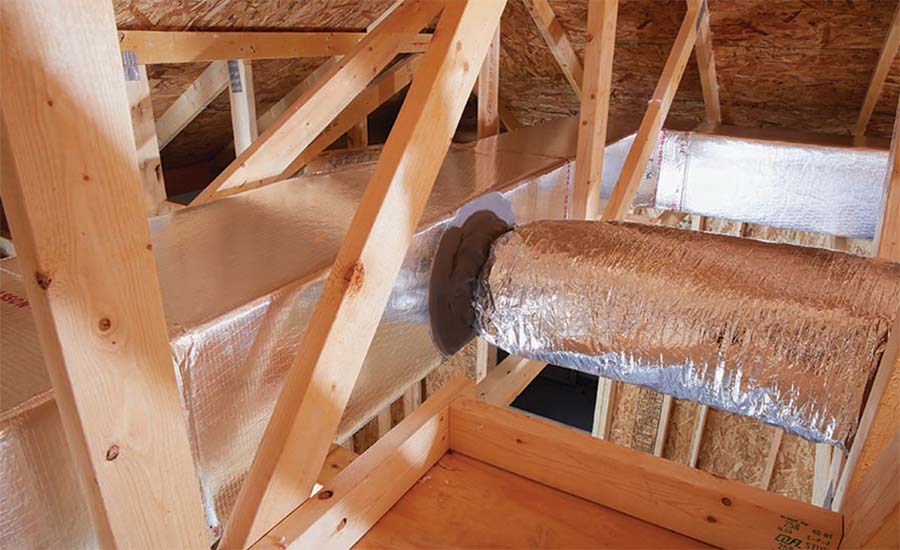The skilled contractor knows how to install (and then test) a duct system to ensure that it operates at its intended efficiency. The skilled contractor also knows that, unfortunately, not all technicians possess those same skills. This means that some homeowners have a ventilation design that is not serving them the best it could. Even if a system is replaced, if ductwork is undersized, the homeowner won’t be getting the best bang for their buck.
But the ideal contractor, if servicing a home like the aforementioned one, will help remedy the issue.
Duct Inspections and Retrofits
The easiest homes for duct inspections are those where the ductwork can be easily accessed from an attic or a crawlspace. Regions like the South, such as Florida and Texas, feature homes where the majority have HVAC systems in the attic.
“This doesn’t mean that homes with enclosed ducts, such as in a basement, should be ignored,” said David Richardson, National Comfort Institute curriculum developer and trainer. “If the homeowner’s problem and accompanying pain are great enough, they will give you access to the duct system.”
Equipment replacement offers a good opportunity for contractors to examine a home’s duct system. Since many homes built during the boom of the early 2000s were built to a lower energy code, these homes could offer retrofit opportunities for contractors. Regardless of when a system was installed, contractors should test it to ensure it is operating to its intended parameters. Richardson said that many ducts are designed using general rule-of-thumb guidelines rather than the mathematics truly needed. Many of those systems that are improperly installed are not tested either, so the homeowner may be unaware that any issue with their duct design exists.
Retrofits, and Maintenance
Summertime keeps contractors busy, and Jessica Bazzi, marketing manager for Owens Corning, said that they should consider adding duct retrofit/replacement to their offering while on maintenance inspections. If a homeowner is investing in a new system, but the ductwork is undersized, it is a little like running a high-performance car on a dilapidated highway. In each case, the infrastructure does not allow the technology to operate at its fullest capacity.

(Courtesy of Owens Corning)
“It’s a service that contractors can offer to help the system perform overall in the intended way,” she said. “That also helps the homeowner maximize that considerable equipment investment and the maintenance investment.”
One of the simplest ways to test ductwork is by running a static pressure measurement, which only takes a few minutes but will reveal any significant changes made to the ventilation of the home. Many contractors call this taking the “blood pressure” of the system, as static pressure represents a general, easy-to-take measurement that can reveal if anything has gone amiss. Technicians should also perform a visual inspection, looking for any obvious leaks, holes, or other defects. This can also identify whether the ductwork is properly insulated.
Duct Inspection
David Burd, technical manager for Owens Corning explained that contractors should be sure to check the health of the HVAC unit itself, examining the fan for proper lubrication and function. Pressure checks are taken with an anemometer. Velocity measurements should be taken at the registers as well.
“If the air handler is supposed to put out [x] cfm, then the sum of the measurements of the registers throughout the house should equal that or be only a very small percentage under that,” he said. “That's going to really drive the health of the system.”
All of this data collection means that if a duct system is undersized, a contractor will be armed with the proper evidence to show that to the homeowner and begin a conversation about a duct retrofit.
For contractors who have not yet ventured into duct retrofits, the sector can offer the potential for revenue growth.
“Adding duct replacement and attic insulation to the business model is really targeted at contractors who have a growth mindset and who are looking to diversify their revenue grow their business,” said Bazzi.



Report Abusive Comment